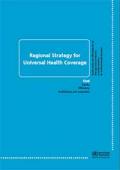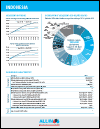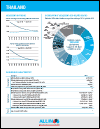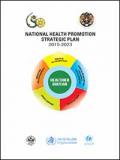What's New
Displaying results 2791 - 2800 of 4914

Resource | Publications,
This Regional Strategy for Universal Health Coverage was unanimously endorsed by the Sixty-Fifth Session of the Regional Committee for South-East Asia (Resolution SEA/RC65/R6) in September 2012. Previously, in May 2012, at the Sixty-fifth World Health Assembly, the Director-General, Dr Margaret Chan announced UHC as a WHO priority for her second term in office (2012-2017).
Countries in the WHO South East Asia Region (SEAR) have made significant contribution to UHC with respect to both conceptual thinking as well as implementation. The focus in NHPSP has been on improving equity in health as the core of UHC. To assist in this effort, this Regional Strategy systematically documents technical issues and international experience as a practical reference to advancing UHC, for both Member States and WHO.

Resource | Publications,
Hundreds of millions of people are affected by humanitarian emergencies each year. Of the 314 million people affected by humanitarian emergencies in 2013, 1.6 million were people living with HIV. Of these, 1.3 million people (81%) were in sub-Saharan Africa. Many were displaced, lacked access to essential HIV services and suffered as a result of shortages that could have been avoided.
1 million people living with HIV did not access treatment in humanitarian emergencies in 2013. When 1.6 million people living with HIV were affected by humanitarian emergencies in 2013, they suffered service disruptions and restrictive policies that threatened their lives. More than one million people were estimated to have been unable to access anti-retroviral therapy, due to humanitarian emergencies.

Resource | Fact Sheets,
To end the AIDS epidemic by 2030, specific—yet flexible—strategies are needed for different age groups, populations and geographical locations. Ending the epidemic among adolescents requires amplifying investments where they can make the most difference and fostering innovation by adolescents and youth themselves, as well as governments, international organizations, civil society and the private sector.

Resource | Fact Sheets,
India fact sheets on estimated number of adolescents living with HIV 2013. The fact sheets provide information on adolescent HIV trends, distribution of adolescent AIDS-related deaths, HIV treatment for adolescents, adolescent knowledge, testing and behavior related to HIV and adolescent key population.

Resource | Fact Sheets,
Indonesia fact sheets on estimated number of adolescents living with HIV 2013. The fact sheets provide information on adolescent HIV trends, distribution of adolescent AIDS-related deaths, HIV treatment for adolescents, adolescent knowledge, testing and behavior related to HIV and adolescent key population.

Resource | Fact Sheets,
Thailand fact sheets on estimated number of adolescents living with HIV 2013. The fact sheets provide information on adolescent HIV trends, distribution of adolescent AIDS-related deaths, HIV treatment for adolescents, adolescent knowledge, testing and behavior related to HIV and adolescent key population.

Resource | Presentations,
International AIDS Assistance 2014 slideshow
Prepared by
The Kaiser Family Foundation

Resource | Presentations,
Asia Pacific Intergovernmental Meeting on HIV and AIDS
Bangkok, Thailand
29 January 2015

Resource | Publications,
The National Health Promotion Strategic Plan (NHPSP) for Bhutan is a first of its kind in the history of health system of Bhutan. The strategic plan document seeks to provide policy makers, health promoters, educators and other stakeholders with a broad strategic framework for development and strengthening of health promotion within the health sector and sectors across government, private and civil society organisations over the period 2015-2023.
The document provides the current health situation in Bhutan, NHPSP’s vision, mission and goals and objectives. The document is based on the five key strategic areas of (i) Health in All Policies (HiAPs), (ii) Capacity Building, (iii) Healthy Settings, (iv)Targeted Interventions for Priority Health Concerns and (v) Innovation for Sustainability. The each of the strategic area is targeted to foster positive processes for health promotion approaches through inter-sectoral collaboration, capacity building, sustainable and healthy settings/interventions, legislation and regulation to support health promotion across all sectors.

Resource | Tools,
The purpose of this manual is to provide a resource for training to increase understanding of Health in All Policies (HiAP) by health and other professionals.
The training manual target audience is universities, public health institutes, non-governmental organizations, training institutions in government and intergovernmental organizations. The training is structured to target professionals from middle to senior levels of policy-making and government from all sectors influencing health. These include health, employment, housing, economic development, finance, trade, environment and sustainability, social security, education, agriculture and urban planning. Depending on the content, it would also be advisable to include participants from civil society.





